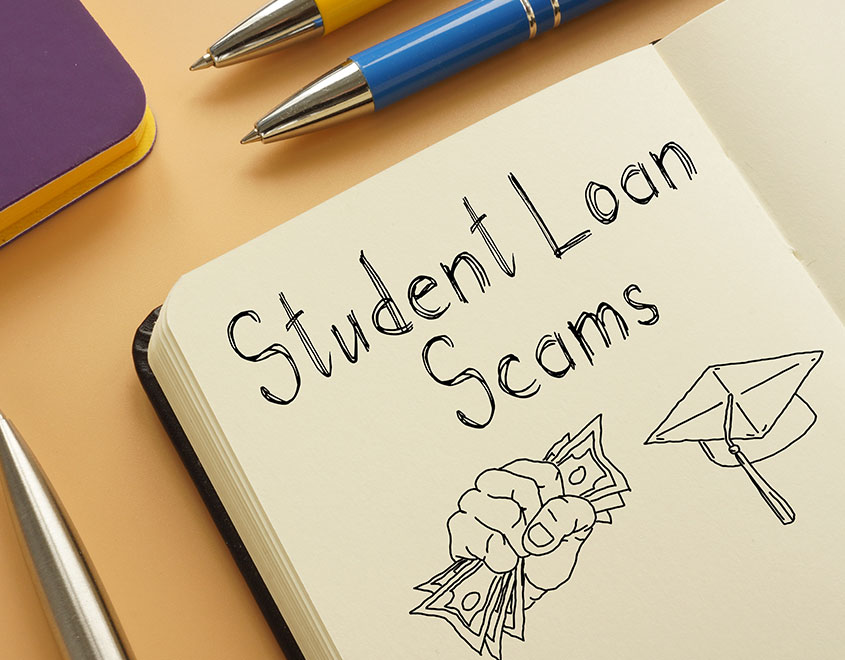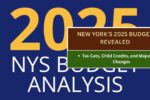As the U.S. Department of Education resumes federal student loan collections on May 5, 2025, scammers are ramping up efforts to exploit anxious borrowers. With millions facing repayment after years of pause, fraudulent actors are posing as legitimate service providers, promising debt relief or forgiveness in exchange for personal information or fees.
Here’s what borrowers need to know to avoid falling victim to these increasingly sophisticated scams.
Common Student Loan Scams to Watch For
1. Upfront or Monthly Fees
One of the most common warning signs is being asked to pay money upfront for debt relief services. According to Bankrate, federal student loan services are completely free, and you should never pay for help applying for income-driven repayment plans, consolidation, or forgiveness programs.
2. Requests for Sensitive Information
If someone asks for your Federal Student Aid (FSA) ID, Social Security number, or bank account details, treat it as a red flag. This information can be used to take over your loan account or steal your identity. The Federal Student Aid office warns borrowers to protect their credentials at all costs (studentaid.gov).
3. Promises of Instant Loan Forgiveness
Fraudsters often lure borrowers with guarantees of immediate loan cancellation or discharge, regardless of your eligibility. In truth, forgiveness programs like Public Service Loan Forgiveness (PSLF) and Income-Driven Repayment (IDR) forgiveness have strict criteria and take time. There is no legal way to instantly wipe out federal student loan debt.
4. Pressure Tactics and Urgency
Scammers often say you must act “right now” to qualify for relief before a deadline. This tactic is meant to prevent you from thinking critically or doing your own research. According to the California Department of Financial Protection and Innovation (dfpi.ca.gov), urgency is a common pressure strategy used by scam artists.
5. Fake Government Identities
Some fraudsters impersonate the Department of Education or loan servicers using logos, email addresses, and websites that look official. Always verify the source by checking directly on studentaid.gov or calling your loan servicer using the contact information listed there.
6. Instructions to Avoid Your Servicer
If someone tells you to stop communicating with your loan servicer, that’s a huge red flag. Borrowers have reported being told to send payments elsewhere, resulting in missed payments and delinquency or default. Only your official loan servicer should handle your student loan payments.
7. Requests for Power of Attorney
Some scams involve tricking borrowers into signing power of attorney documents, giving scammers legal access to manage your loans. You should never give anyone legal control over your student loans unless it’s a trusted legal representative.

How to Protect Yourself
- Use Only Official Websites: Visit studentaid.gov for all federal loan services. You can apply for income-driven plans, check your balance, or change your servicer safely here.
- Don’t Share Your FSA ID: Treat your FSA login like your bank password. Sharing it is like handing over your digital signature.
- Verify Suspicious Messages: If you receive a call, email, or letter about your student loans, verify it by contacting your loan servicer using the number or website listed on studentaid.gov.
- Report Scams: If you suspect you’ve been contacted by a scammer, report it to the Federal Trade Commission (FTC) and your state’s attorney general. Also inform your loan servicer immediately.
Collections Resume May 5, 2025
After a prolonged COVID-era pause, the Department of Education confirmed that defaulted federal student loan collections will restart on May 5, 2025. This includes wage garnishment, tax refund seizures, and Social Security benefit offsets for those who are delinquent.
Borrowers in default should look into Fresh Start, a government initiative that offers a one-time opportunity to get out of default and access affordable repayment plans. Details are available at studentaid.gov/freshstart.
Final Thoughts
As repayment resumes, borrowers are urged to remain cautious and vigilant. If it sounds too good to be true, it probably is—and no one can guarantee student loan forgiveness overnight.
By using official resources, protecting your information, and being aware of red flags, you can safely navigate the return to repayment and avoid falling victim to scams.
Useful Links
- Federal Student Aid: https://studentaid.gov
- FTC Fraud Reporting: https://reportfraud.ftc.gov
- DFPI Loan Scam Warnings: https://dfpi.ca.gov
- Bankrate Scam Guide: https://www.bankrate.com/loans/student-loans/how-to-spot-student-loan-scams/
This article has been carefully fact-checked by our editorial team to ensure accuracy and eliminate any misleading information. We are committed to maintaining the highest standards of integrity in our content.

Outside of work, he enjoys playing chess, following cricket, and writing short stories. His commitment to integrity and in-depth analysis strengthens OTE News’ mission of providing trustworthy journalism.




